Castle Rock
WKR
- Joined
- Mar 28, 2020
- Messages
- 1,822
OK
Follow along with the video below to see how to install our site as a web app on your home screen.
Note: This feature may not be available in some browsers.
Out of curiosity. How many rounds are you shooting a year, and how often do you check torque or retorque. In my experience, oil on the screws and lots of use is a recipe for a loose screw. I’ve come to like the loctite and not worry about it.I de-grease the screws and clean them with cloth so as to remove gunk from the threads. I let them dry so they are spotless. I then apply a light sheen of oil, and evenly and properly torque down the ring cap screws in X pattern by angle…
Not a whole ton, honestly. I never re-check torque because you will always end up adding more with most torque wrenches. I do witness mark. Nothing's ever moved, but again, I would not call myself high round count usage.Out of curiosity. How many rounds are you shooting a year, and how often do you check torque or retorque. In my experience, oil on the screws and lots of use is a recipe for a loose screw. I’ve come to like the loctite and not worry about it.
Nightforce for the win.So, I did a deep dive on this years ago, asking a ton of industry professionals from the .mil side of the house what they did and why.
Nightforce: Sure, Blue loctite is fine. Torque to 25 in-lb like it says. We don't know if engineering said wet or dry or whatever, but we don't care, this thing is a hoss!--Paraphrased, regarding Unimount and NXS 1-4 at the time. (I did this, and when I removed the scope after years of use, ZERO ring marks, also it tracked true and was fine.)
Vortex: Loctite is bad in that it increases compression on the tubes. Reduce torque by 25% or don't use it. We have had scopes damaged by the use of loctite. (I have never owned Vortex)
Hakan Spuhr: We ship our screws waxed. People who strip this off and torque dry can have issues. If you clean them with acetone, alcohol, etc then use oil or loctite. DO NOT torque a dry screw for my mount or any other mount, especially if the base metal is aluminum, as most of the torque goes into drag/friction and not clamping. (I have never owned a Spuhr mount, but have spoken with Hakan on this very topic.)
KAC: A small bit of oil, just a sheen, wiped on the threads. Clean and sheen. Not dripping, not dry. (I have never owned a KAC scope mount).
Leupold: We will ship you screws with nylok patches on them with our ISMS mounts so you can stop quibbling about it. Torque it to 28 in-lb, fam! (Although when I did this, I got flakes of black stuff in the tube of my MK6, which I am suspicious could be flaking ano from tube compression. I have nothing to back that with, and Leupold cleaned it out in 3-4 weeks for me, saying nothing about the matter).
Geissele: The screws come lightly oiled and are meant to be de-greased with 222 added, or installed as they come, with light machine oil, to 18 in-lb. (When I installed a K16i in a G SuperPrecision mount using these values, it mocked up with several thousandths clearance on both sides dry at 18 in-lb), then I added loctite and the ring halves did indeed go solid at about 15-16 in-lb. as measured by feeler gauges. K16i's have thing, soft tubes, though, but this IS personal proof witnessed that Loctite does allow for increased compression vs dry, clean threads, and whether this is a good or bad thing depends on the equipment used.)
Reptilia: We recommend dry, clean screws. Regarding their AUS mounts. That said, the instructions also list 222 as "optional, not needed" and no separate torque spec is offered for if it IS used, as Vortex does (11 vs 18 in-lb) on the Gen 3 razor. I have further inquired for clarification.
That said...what do I do?
I de-grease the screws and clean them with cloth so as to remove gunk from the threads. I let them dry so they are spotless. I then apply a light sheen of oil, and evenly and properly torque down the ring cap screws in X pattern by angle, so that clamping forces/compression remains equal. I will end up with no worse than a 0.002" delta between all points on the rings on either side. I also make sure nothing "goes solid", because THIS is what will cause slippage (as well as under torque). The screws have constant tension on them from both a little bit of thread stretch, and mainly scope tube compression rebound. It makes the threads behave like Helicoils, and this is why you do not need to use a thread locker. The slight sheen of oil is important so that all fasteners have equal compression from equal axial force. That's all torque measured with your wrench is, is the measure of axial force required to overcome drag. I do make sure that my scopes have overlap with the mount specs. For example, I use Nightforce scopes and Reptilia AUS mounts. Reptilia says 15 in-lb, Nightforce says 25 in-lb max (they used to say 15, but changed it a couple decades ago because people complained "WiLl It HolD!?" and they tested, determined 25 was safe for their product, and changed the recommendation to stop the questions, lol! No scope ever slipped in their testing even on .50 BMG at 15 in-lb. Another thing I will do is use acetone to chemically de-grease the mounting surface of the scope tube and inner rings. I leave this as such, bone dry. I will also lightly oil the 1913 section of rail that the mount clamps to, on my AR's. This comes from conversations with Hakan Spuhr, which he has publicly stated as well and you can Google in your free time.
Checking and rechecking with most torque wrenches can over a few cycles cause the screws to become tighter than indicated. A witness mark is a better alternative, and should be used whether a locking compound is, or not.Do you Loctite the action screws? How about spark plugs? No, because it’s not needed. Loctite whatever you want, but it’s as silly as bead lock rims to drive down forest service roads.
Nothing on the rifle is as easy to re torque as the ring screws - this concept is ridiculously easy to test for yourself by simply checking the ring torque on every rifle you own to see if they have loosened up. They never do - it’s not a thing.
sorry late reply just found the forum to clarify not ex special forces; I am a retired Army sniper and graduate of 5th Special Forces Sniper course! don't want to have bad info out there. I use vortex rings and never use Loctite on them with 6 school guns and literally thousands of rounds through them never an issueYou ever hear of James Eagleman the ex special forces sniper who runs Barbour Creek Shooting Academy? Guess what seen him mount scopes without loctite on the rings and guess what. Those rifles are fired 1000's of times a year in his classes. He recently swapped a barrel on one with over 4000 round on it. Still hitting original poa with no change in poi just groups were opening up because barrel was toast. Now tell me he doesn't know what he's doing or talking about. Just because the way you do it works for you doesn't mean that's the only way to do it.
sorry late reply just found the forum to clarify not ex special forces; I am a retired Army sniper and graduate of 5th Special Forces Sniper course! don't want to have bad info out there. I use vortex rings and never use Loctite on them with 6 school guns and literally thousands of rounds through them never an issue
I've used loctite purple with a little witness marks on the small screws that I'm paranoid about, scope rings and plate mounts
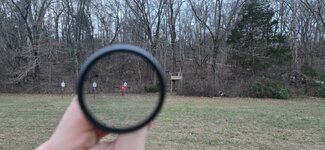
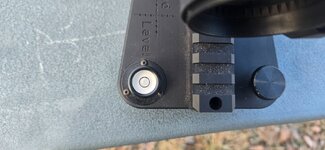
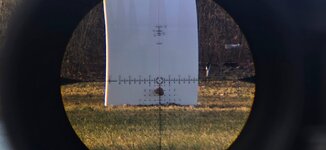
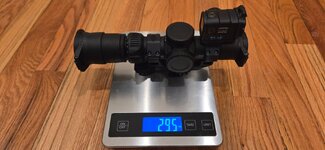
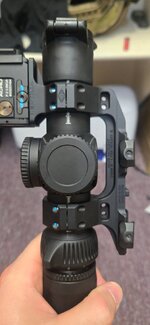
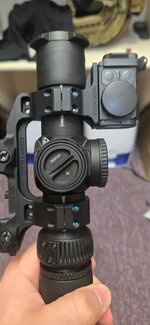
Oh boy.I like to keep up with this thread. I recently bought my first real Vortex (I had previously owned some Strike Eagles purchased as gifts for new shooters on low use guns.). I called Vortex and Reptilia. Reptilia is who made the mount, and Vortex the optic, for Project Hunter. Likely one of the most exhaustive optic and mount contracts with regard to testing. Several hundred thousand rounds of real and machine approximated 7.62 rounds down range from scar H were used as vetting.
So I reached out to Reptilia. They advised me to use 15 inch pounds of torque with their mounts, which was specified dry both in their comms with me, and in their product instructions. The screws and mounts are 100% bone dry, chemically decreased, upon arrival. They specified 0 oil, 0 loctite. They were very clear in their instructions both when I reached out, and when I read the included instructions.
I then reached out to Vortex, who made the optic. They took a few days to respond to me as they discussed this with their team. They finally replied that for Project Hunter, they tested of course the contract Reptilia mounts and their optic, installed as per instructions as they arrived---dry, no oil. No loctite.
During extensive live and simulated testing, no scopes moved in Reptilia mounts, and no ring cap screws became loose.
Since I am using tried and tested combo of vortex scope and reptilia mount, I have used 16 inch pounds (what's 1 more? Makes sure if my wrench is on the shy side its still minimum spec, and still gives 2 inch pounds leeway on the big side per vortex 15-18 instructions), dry, and nothing else.
Things I noted: the screws moved until the wrench clicked over. Its been my experience that when inconsistent clamping is happening, near the end of the sequence, the screws simply stop moving as tq is applied and then soon the wrench clicks. These spun right about up to the moment the wrench clicked. Also, the ring gaps from front to back are within 0.002". This is the same as my loctited nightforce projects have been.
I really like using optics combos that were developed in conjunction with one another. Both companies/or the same, for nightforce etc, have tested amd engineered the torque specs and compatibility and tested for validity on Shaker tables and with live fire, to the specs of the military purchasers involved. This supersedes the backyard tests on forums like this and others no matter how well done, by virtue of budget and sample size alone, as very few people have a Shaker table that can accurately reproduce scar h recoil, or the budget to run $50k worth of optics and mounts on said table, plus similar live fire, etc. Standing on the shoulders of the companies involved is cheaper and easier by far.
As to the scope and so forth, I am very pleased.
View attachment 1005534
View attachment 1005535
View attachment 1005536
View attachment 1005537
Interestingly, although the reticle is as level as I think possible, the laser engravings are a bit wonky.
View attachment 1005538
View attachment 1005539
